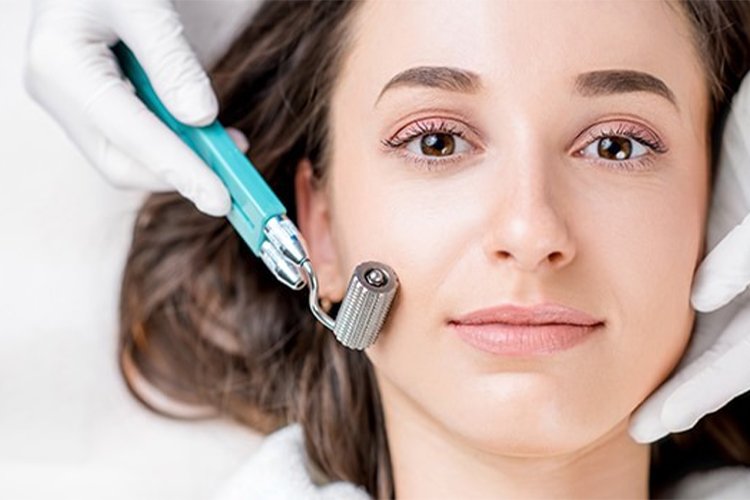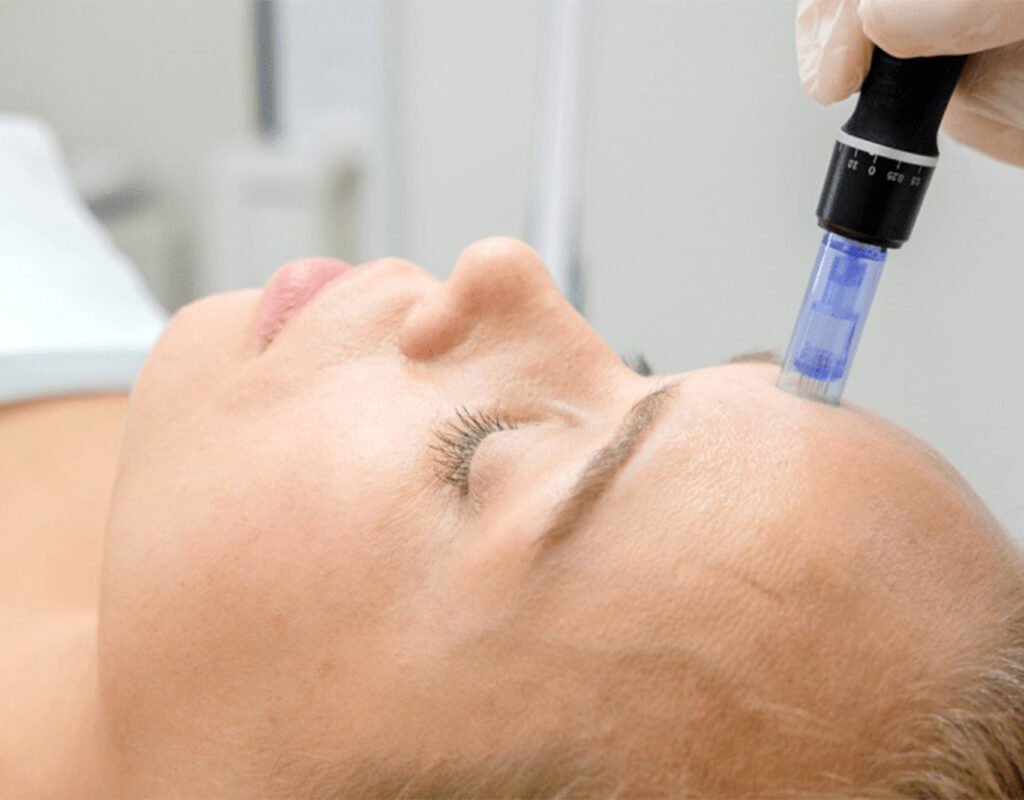One of the best things about modern skincare is the wide range of options beauty fans have when it comes to finding the right treatments, procedures, and products for their skincare concerns. From countless serums at Sephora to a variety of tools at Ulta, there’s sure to be something for every flaw and insecurity.
And if you’re struggling with fine lines, hyperpigmentation, and acne scarring (because I’m the same!), there’s one treatment that could solve all of your skincare woes once and for all: microneedling. While the name may sound a bit intimidating because of the word “needle,” this minimally invasive treatment is highly effective, painless, and quick. Wondering how it works, if it hurts, and what exactly it does? Below, we’ve ~rounded up~ everything you need to know about microneedling, with advice and expertise straight from dermatologists.
What is microneedling?
Let’s get straight to the point: Microneedling is a cosmetic procedure that uses a device with fine needles to create tiny punctures or micro-injuries in the surface of the skin. These micro-injuries stimulate the body’s natural wound-healing process and trigger the production of collagen and elastin, which are important proteins that maintain the skin’s overall structure and elasticity.

How does microneedling work?
“There are several forms of microneedling,” explains Dr. Lori Aliksanian, founder of MedBeautyLA, “but the safest and most effective method is to have a trained provider treat your skin with an FDA-approved motorized microneedling device.” These devices are shaped like large pens and feature stainless steel microneedles that are safe for the skin. (Needle depth can vary depending on the treatment goal—whether to treat discoloration, acne, or scarring—but typically ranges from 0.25 to 2.0 millimeters.) “Once turned on, the device ‘stamps’ the skin in precise, repeated motions as your practitioner glides it over the treatment sites,” says Dr. Aliksanian.
What do I need to know before microneedling?
“Microneedling is fantastic for a number of skin concerns, but it’s especially good for clients with uneven skin texture, acne scars, stretch marks, and fine lines,” explains Dr. Aliksanian. “However, it’s also beneficial for clients who simply want to improve skin tone and brightness, or are interested in non-invasive anti-aging options.” As the device causes micro-injuries, the body works to repair those injuries by producing collagen and elastin. As the skin heals, it becomes firmer, smoother, and has a more even texture. It also heals old scars and makes the skin plumper and more radiant. Yes, please.
How long does it take to heal after microneedling?
Right after a microneedling procedure, the skin will be red and maybe even a little irritated, but this usually goes away after a few hours. To soothe it, patients can apply a thin layer of gentle, non-comedogenic moisturizer. Aside from reducing the redness, this also aids the healing process and maintains the skin’s barrier function.
What are the disadvantages of microneedling?
Perhaps the most commonly asked question about microneedling is whether the procedure is painful. Stamping on the skin doesn’t exactly sound painless, but believe it or not, it is painless! That’s because the skin is numbed with a topical cream for about 30 minutes before the procedure, meaning it is completely numb when the microneedling begins. During treatment, some people may feel a mild sensation similar to a slight scratching or tingling, but usually patients do not feel anything.

How do you maximize the results of microneedling?
After the provider is finished with the microneedling treatment (the length of a microneedling procedure can vary, but generally lasts between 30 minutes and 1 hour), it is important to follow proper aftercare. In addition to moisturizer, it is important to apply a broad-spectrum sunscreen to protect the skin from UV damage. Additionally, patients should avoid using harsh skincare products like peels or retinoids for a few days after the session. And if possible, they should try not to wear makeup for at least 24 to 48 hours after a treatment. Fortunately, however, after a few sessions, patients will notice their skin glowing from within!
Is microneedling safe to do at home?
Perhaps one of the most controversial topics surrounding microneedling is whether it is safe to do at home. Although there are a handful of microneedling devices on the market for home use, microneedling your skin at home is not recommended. According to Michelle McMahan, medical aesthetician at Palm Beach Facial Plastic Surgery, “Most portable microneedling treatments are performed at a 45-degree angle, which can cause tears and cracks in the skin.” For this reason, it’s best to see a professional for microneedling treatments rather than doing them at home, as they can do more harm than good to the skin.
How often should you undergo microneedling?
“If you’re just starting out, you should always start with a series of three treatments once a month for three months,” says McMahan. “After that, you can progress to a single treatment every three to six months to maintain your results.” Additionally, using PRP (or platelet-rich plasma, a part of your blood that contains growth factors) in microneedling can shorten the time it takes you to see results. Vampire facials are the winner!

